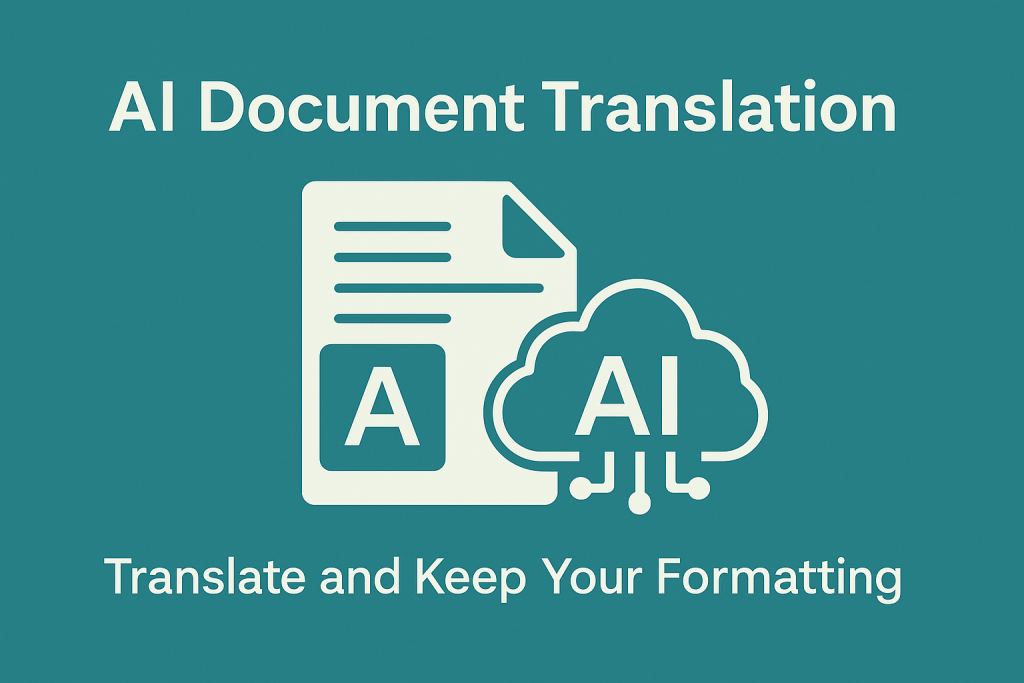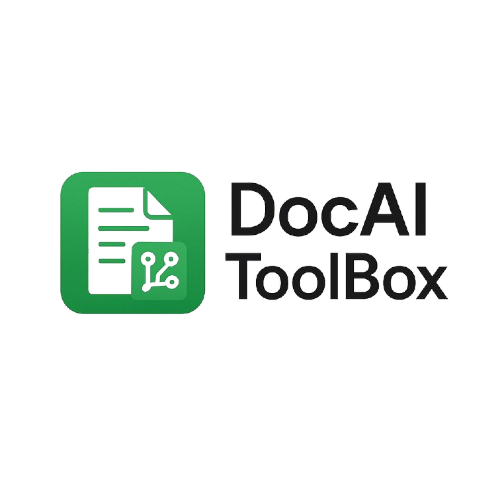AI Document Translation: Translate and Keep Your Formatting

Translating documents has always been a challenge. Whether you’re a teacher preparing bilingual worksheets, a student reading academic papers, or a professional working with contracts, the biggest problem is this: how do you translate the text while keeping the document’s formatting intact?
Copying and pasting paragraphs into Google Translate is messy. Tables break, headings get lost, and PDFs often turn into a jumble of text. That’s where AI document translation comes in.
Instead of translating just a few words at a time, AI-powered tools can handle whole documents—PDFs, Word files, PowerPoints, and more—while preserving the layout, fonts, and styles.
In this guide, we’ll explore how AI document translation works, why formatting matters, the best tools available, and practical tips for classrooms, businesses, and everyday users.
Why Formatting Matters in Translation
When you’re working with documents, formatting is almost as important as the text itself. Think about:
- Worksheets with charts or diagrams
- Research papers with citations and tables
- Business contracts with clauses in numbered lists
- Presentations with slides, bullet points, and images
If the formatting is lost, the document becomes confusing and sometimes unusable. AI document translation solves this by recognizing both the content and the structure of the document.
How AI Document Translation Works
AI-powered translation has advanced far beyond word-for-word replacements. Here’s how it typically works:
- Document Upload: You upload a PDF, Word file, or other supported format.
- OCR (Optical Character Recognition): If it’s a scanned document, the AI extracts text from images. (We explained this in detail in From PDF to TXT: How to Extract Text from Scanned Documents).
- Machine Translation: The text is translated using advanced AI models that understand grammar, tone, and context.
- Reconstruction: The translated text is placed back into the original layout, preserving formatting like fonts, colors, spacing, and tables.
This means you get a translated version of your document that looks almost identical to the original.
Benefits of AI Document Translation
1. Saves Time
No more copy-pasting text into translators and fixing formatting afterward.
2. Supports Multiple Formats
Most AI tools handle PDFs, DOCX, PPTX, and even Excel spreadsheets.
3. Preserves Layout
Tables, bullet points, and headings remain intact.
4. Better Context
Modern AI models understand context, making translations smoother and more natural.
5. Accessibility
Teachers and businesses can instantly create bilingual versions of important materials.
Popular AI Document Translation Tools
Here are some of the best-known tools for translating documents while keeping formatting:
- Google Translate (Document Upload): Free, but sometimes struggles with complex layouts.
- DeepL Translator: Known for high-quality translations in European languages; supports document uploads.
- Doclingo: Specializes in preserving formatting for academic and business documents.
- Doc AI Toolbox: Brings AI translation and text extraction directly into Google Docs™ and Slides™ — perfect for teachers and students who already use Google Workspace.
Classroom Uses of AI Document Translation
Teachers face increasing diversity in their classrooms. AI document translation can help by:
- Creating bilingual worksheets for English learners.
- Translating reading materials so all students can access the same content.
- Making parent communication easier with letters in multiple languages.
- Translating student projects into English (or another language) for presentations.
Business and Professional Uses
For professionals, AI document translation is a huge time saver.
- Contracts & Agreements: Translate legal documents while keeping numbering and clauses intact.
- Reports & Research: Share findings across global teams without reformatting.
- Presentations: Instantly create multilingual slides for international clients.
- Healthcare & Technical Fields: Maintain accuracy in tables, charts, and terminology.
Tips for Getting the Best Results
Even with AI, you’ll want to be careful:
- Check for Accuracy: Always review critical sections (like legal or medical terms).
- Use OCR for Scans: If your file is scanned, make sure the tool includes OCR.
- Keep Original Copies: Save the original in case you need to compare.
- Proofread for Tone: AI translations are good, but tone may vary between formal and casual.
Limitations of AI Document Translation
While powerful, AI isn’t perfect:
- Technical Jargon: May mistranslate field-specific terms.
- Complex Layouts: Very advanced formatting (like nested tables) may shift slightly.
- Cultural Nuance: Phrases don’t always carry the same meaning across languages.
That’s why AI is often best used for first drafts, with human review for sensitive documents.
Future of AI Document Translation
We’re only at the beginning. Future improvements may include:
- Even better formatting preservation (complex scientific papers).
- Live collaborative translation in Google Docs and Microsoft Word.
- Voice and audio integration, where translated documents can also be read aloud in natural voices.
- Greater accessibility, making materials instantly available in dozens of languages.
Final Thoughts
AI document translation is transforming the way we share information. No longer do we have to choose between accuracy and formatting. With tools like Doc AI Toolbox, teachers, students, and professionals can translate documents directly inside Google Docs™ and Slides™, keeping both the content and the layout intact.
If you want to understand how AI handles text extraction from more complex sources, you might also check out our guide: From PDF to TXT: How to Extract Text from Scanned Documents.
The future of translation is about more than just words — it’s about making documents accessible, usable, and inclusive across languages. With AI, that future is already here.

